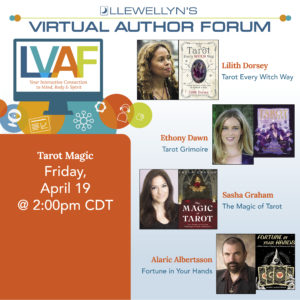Readers, please enjoy this guest blog post by Ember Grant, author of Magical Candle Crafting, The Book of Crystal Spells, The Second Book of Crystal Spells, and the new Mythology for a Magical Life.
Mythology has been on my mind a great deal lately since I completed my latest book, Mythology for a Magical Life. As Pagans, we tend to have myths on our radar more than most people, but how often do we study it in depth? Many people like to know the gods and goddesses that were worshiped or may even be interested, perhaps, in the archeology or anthropology of ancient cultures. Some pagans even strive to discover their genealogy in order to embrace the customs of their ancestors. These are all valid pursuits. But how can we “use” myth to make our lives and magic more meaningful?
Most of us recognize that myths are still alive in our modern stories. And some of us have even dedicated ourselves to ancient deities. But what’s missing for many of us is recognizing the sacred in everyday life. Most of us today live with the separation of the sacred and secular; we have our everyday, regular lives and then, perhaps, a moment of the sacred—a ritual or something we do—but then it’s over and we’re back to ordinary life. How often do we consider our actual lives sacred on a daily basis? When we engage in even the most mundane activities we can still keep in mind that we are magic. For example, when we eat we are consuming things that are, like us, made of energy. The food becomes us—our bodies, every cell, constantly renews and changes.
So where do myths come in? They are stories that illustrate all aspects of life. For example, myths of creation, destruction, and regeneration, before scientific understanding, were ways of explaining the natural world. We follow the cycle of the year, but there are cycles in each day as well. And there are cycles in our bodies. Of course, this concept isn’t new to us—most Pagans are familiar with the phrase, “As above so below; as within, so without.” If we see ourselves, our entire existence, as part of everything, then everything we do, create, and think is magic.
Myths were more than stories to ancient cultures. They can be more than stories for us as well, as long as we remember our connection to them. The stories can become metaphors for all aspects of human experience. Several times a day, pause and consider what you’re doing—examine the microcosm and macrocosm. Whether you’re eating, reading, walking, or driving, you are particles of energy in motion constantly interacting with other particles in motion. Consider how deities are often aspects of nature personified: the sun and moon, the stars, the earth and sky, the water, wind, and rain. We can still relate to myths by imagining the living world around us. Aspects of human emotion, too, are reflected in myths and stories. Myth is the story of life, and we’re still living it. Remember that life itself is sacred, and each moment can be filled with magic.
Our thanks to Ember for her guest post! For more from Ember Grant, read her article “Mythology for Every Day of the Week.”









